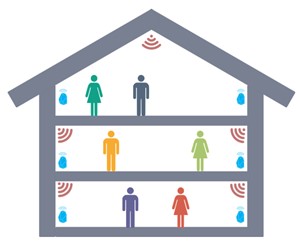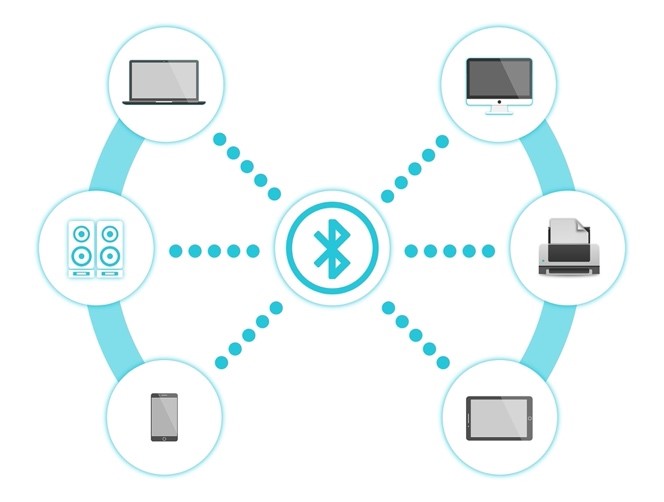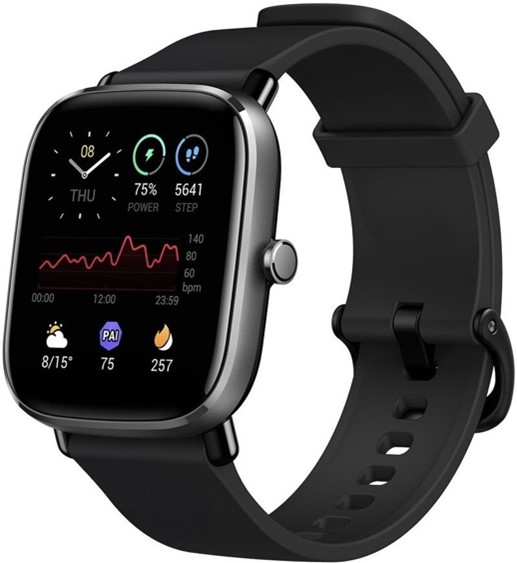Trace: » ningj » smart-diet » shape-2021
Educational Materials
SHAPE Study Flyer
SHAPE Study Educational Materials
The following page outlines all information regarding the how the devices in the study work and how they will be used. The way the devices will be used is described at the end, you may skip ahead to the end of the document if that is all you would like to know about. Below is a summarized list of common questions you may have regarding these devices.
- What is a Smart-Home and how can this technology be used to keep older adults safe?
- What are indoor positioning systems and how do they work (ours is a Bluetooth system)?
- How does Bluetooth technology work?
- What are the smartwatches that I will be using in the study?
- How is my data encrypted and kept safe?
- What are the devices in the study and how are they used?
- Sensor Stations
- Smartwatch
- Master Station
Please visit the additional links if you wish to learn more about the study and the different technologies that will be used. If you have any questions, please contact the study team as outlined in the consent form.
What is a “Smart home”?
With an increase in the ageing and disabled populations, there is a rise in the need for in-home rehabilitation that understands and meets the needs of elderly users. Individuals can understand the indoor patterns of users struggling with dementia or other health complications, using monitoring systems. A Smart Home allows clinicians to monitor one’s health and physical activity with the incorporation of various sensors, cameras, and other devices. The data collected can provide insight as to how users live their daily lives while coping with a disease or their response to a certain therapy. Furthermore, Smart Homes are designed to easily integrate various types of devices, including indoor positioning systems (IPS). These IPS are able to determine which room someone is in, and when they move between rooms. Monitoring this allows clinicians to detect long-term declines in mobility, while older-adults continue living at home. In addition, by examining the physical activity and behaviour of older adults, it is possible to detect abnormal events, such as falls, seizures or loss of consciousness. Overall, Smart Homes allow at-risk individuals to continue to live independently for a longer period, while keeping their healthcare team informed.
What are indoor positioning systems?
Indoor positioning systems (IPS) are very similar to GPS systems, except they focus on smaller indoor locations as opposed to larger outdoor locations. Indoor positioning systems use the strength of signals sent from tracking devices like smartwatches and tags to accurately track the location of these devices. The IPS being tested in this trial uses Bluetooth signal strength levels, and other integrated sensors to track the locations of smartwatches within the participant's household.
Bluetooth technology
Bluetooth is a way for electronics to communicate and exchange data. Many of its applications include wireless headphones, speakers, and car media platforms. There are two types of Bluetooth, Regular Bluetooth, and Bluetooth Low Energy (BLE). The devices in this clinical trial use BLE technology. BLE works by establishing a pair between two devices that want to exchange data, and lets them communicate wirelessly.
Smartwatches
Smartwatches are a type of technology that expand a watch's capability by implementing applications and sensors onto a wearable device. Smartwatches use small touchscreens that can display small-scale applications like fitness tracking, weather reports and video playback. In this clinical trial, smartwatches are used to track the user’s position through their Bluetooth connectivity capabilities. The specific smartwatch used in this trial is an Wear-OS smartwatch, with a custom application specific to this study. The details of this device are highlighted in the device description section of this document.
CHANGE THIS LINK * Wear OS by Google Smartwatches
How is data encrypted and anonymized?
Data safety and the collection of your personal information are extremely important components of this clinical trial. Throughout this trial, all tracking devices are given unique IDs to distinguish between them. Additionally, each individual home is given a different unique ID. This way all the data obtained from the watches and the homes remains anonymous and unidentifiable based on a specific user. Additionally, all data collected by the system can only be accessed by taking it from the master station, or collected by the researchers using the internet connection to the master station.
Devices in this study and their use!
A) The Sensor Stations
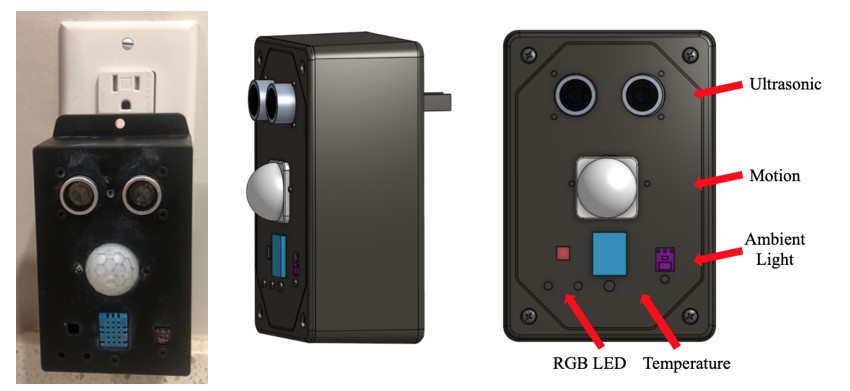 Figure: Sensor Station connected to Outlet (Left), CAD Model of Sensor Station (Right)
Each home will contain a sensor station plugged into an outlet, in each room. No other setup is required! We have done our best to ensure this is a smooth process. There is a short calibration process that will be done with the help of the watch, to teach the sensors which room is which. The sensors included in each station are labelled in the diagram above and record certain events. The ultrasonic and motion sensors detect if someone is near the box, and the temperature sensors measure the room’s condition. The sensor station will connect to the watch and this is what will measure where you are in the house. Remember to wear your smart watch, otherwise the sensor stations cannot find you!
Figure: Sensor Station connected to Outlet (Left), CAD Model of Sensor Station (Right)
Each home will contain a sensor station plugged into an outlet, in each room. No other setup is required! We have done our best to ensure this is a smooth process. There is a short calibration process that will be done with the help of the watch, to teach the sensors which room is which. The sensors included in each station are labelled in the diagram above and record certain events. The ultrasonic and motion sensors detect if someone is near the box, and the temperature sensors measure the room’s condition. The sensor station will connect to the watch and this is what will measure where you are in the house. Remember to wear your smart watch, otherwise the sensor stations cannot find you!
B) The Smartwatch
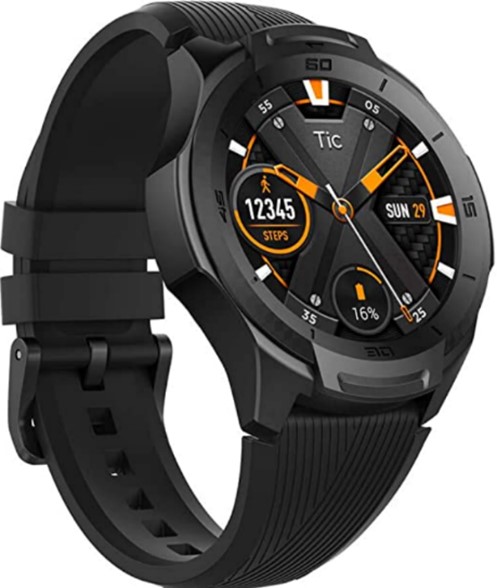 The PLACEHOLDER will be used in this clinical trial. This watch is an Android-based Google smartwatch. This will still work as a normal smart watch, just with the addition of one custom app. It essentially functions as a normal watch that you should wear regularly, charge at night and put back on in the morning. If the app closes you will need to swipe down with your finger on the watch's touch screen to find an app called MacM3Wear. Then you touch the icon beside it and the app will begin. If the device is charged regularly the watch will not die and the app will run continuously! But we understand that things happen so please contact us if the watch powers off and you are having trouble restarting the application.
The PLACEHOLDER will be used in this clinical trial. This watch is an Android-based Google smartwatch. This will still work as a normal smart watch, just with the addition of one custom app. It essentially functions as a normal watch that you should wear regularly, charge at night and put back on in the morning. If the app closes you will need to swipe down with your finger on the watch's touch screen to find an app called MacM3Wear. Then you touch the icon beside it and the app will begin. If the device is charged regularly the watch will not die and the app will run continuously! But we understand that things happen so please contact us if the watch powers off and you are having trouble restarting the application.
C) Master Station with Ethernet Cord
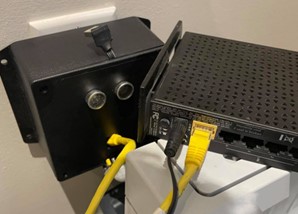 One of the sensor stations is much larger than the others and will have an ethernet cable coming out the front of it. This box will be labelled as the master station. The ethernet cable needs to be plugged into your router, as shown in the left-hand side image, so the system can have access to the internet. This box is unique in that it contains an additional device with internet access in addition to the sensors and sensor station.
One of the sensor stations is much larger than the others and will have an ethernet cable coming out the front of it. This box will be labelled as the master station. The ethernet cable needs to be plugged into your router, as shown in the left-hand side image, so the system can have access to the internet. This box is unique in that it contains an additional device with internet access in addition to the sensors and sensor station.
You are here: start » public » research » shape-2021

